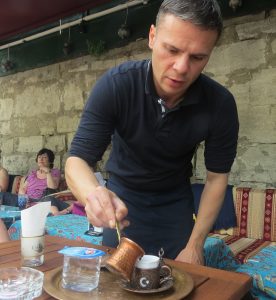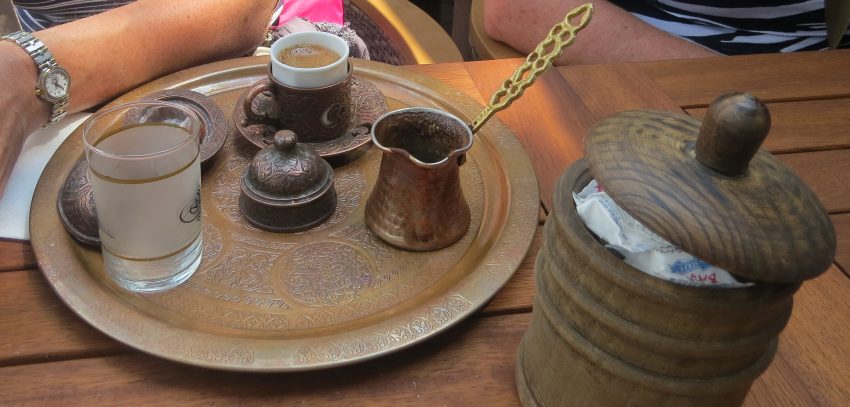Our next long anticipated vacation will be a cruise in the Baltic this summer. Our original itinerary had changed with the removal of an overnight in St. Petersburg, but so far everything else looks good.
While doing some research into the Baltic ports I came across a very interesting study. “Canada stands out as the only non-European country to make the list of the world’s top ten coffee consumers along side Northern European countries, lead by Finland.” You can read the whole report here; https://www.worldatlas.com/articles/top-10-coffee-consuming-nations.html. I don’t think any of us are surprised by this outcome as we have long been strong consumers of coffee in this country. Tim Horton’s is a national icon.
 But it did get me thinking about coffee culture in Europe and how it differed from, or was similar to Canada. So pour yourself a double double and join me as we explore this travel topic.
But it did get me thinking about coffee culture in Europe and how it differed from, or was similar to Canada. So pour yourself a double double and join me as we explore this travel topic.
Consumption of coffee in Europe has its roots in the traditional Ottoman method of preparing coffee by bringing to a boil a mixture of the coffee and water together. This method is still popular in countries such as Turkey and Finland. It was the British that started filtering and steeping coffee in the later part of the 18th century, followed by France and the rest of continental Europe.
Variations on the way coffee is brewed also occurred around the same time, resulting in what we today order as cappuccino, espresso or latte. Adding cream (or whipped cream), sugar and spices changed the beverage further still and there is early mention of adding alcohol as well, the predecessors to Irish Coffee. Today if you want a coffee without any of the flourishes you order a Cafe Americano in Europe and add your own desired cream and sugar.
By the 19th century Europeans had developed different devices to use in the making of coffee, both for private homes and public cafes. Although Germany and Italy produce coffee internally the majority of it is imported from Brazil or Vietnam.
 Ordering and drinking your coffee in Europe can be a cultural experience in itself. We ordered coffee during a mid-morning break in Turkey. It arrived on a tray alongside a serving of Turkish candy and a glass of water. The waiter poured it with a flourish and left us to enjoy the very strong brew, hence the water and sweets.
Ordering and drinking your coffee in Europe can be a cultural experience in itself. We ordered coffee during a mid-morning break in Turkey. It arrived on a tray alongside a serving of Turkish candy and a glass of water. The waiter poured it with a flourish and left us to enjoy the very strong brew, hence the water and sweets.
Most coffee is served with pastry, especially in Northern Europe, so be sure to ask for the local favourite or specialty, whether it is a croissant in France or Biscotti in Italy. Espresso is generally served earlier in the day and Italians will drink it quickly while standing at the counter. Cappuccino is rarely consumed outside of the morning hours. Don’t be afraid to try new blends or methods.
In Northern Europe your coffee break is an event and should never be rushed. Enjoy it with the local baked goods, inside or on a patio, early morning or later at night. I look forward to having a coffee break in every Northern European country I can while ashore in June.
Whatever you order find a way to marry the Canadian love of coffee with your love of European travel.
